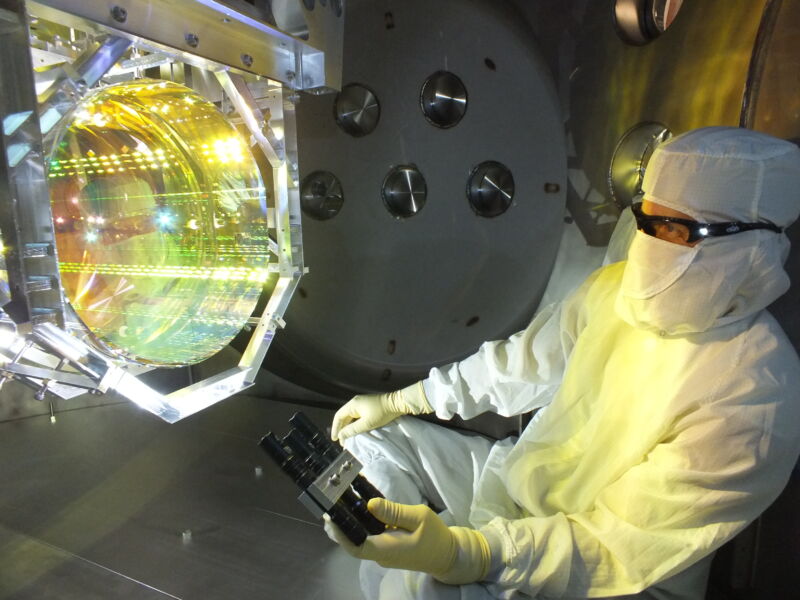
Objects that obey the rules of quantum mechanics behave very differently from those in the familiar world around us. That difference leads to an obvious question: is it possible to get an everyday item to start behaving like a quantum object?
But seeing quantum behavior requires limiting an object's interactions with its environment, which becomes increasingly difficult as objects get larger. Still, there has been progress in increasing the size of the objects we can place in a quantum state, with small oscillators and even grains of sand being notable examples.
So far, researchers have approached this challenge largely by scaling up systems that were relatively easy to work with. But in today's issue of Science, researchers report that they've gotten close to putting a big object into its quantum ground state—a really big object: the 40 kilogram mirrors of the gravitational-wave observatory known as LIGO.
In the swing
Mirrors are central to the function of LIGO. They're placed on opposite ends of long tunnels, allowing laser light to bounce back and forth along the tunnels many times. This makes the distance traveled by the light far larger and therefore more likely to experience a measurable influence from a passing gravitational wave.
Any noise in the mirrors would cause problems for the function of the detector, so they've been stabilized in various ways. To begin with, they're heavy, weighing in at 40 kilograms (88.2 lbs). They're also suspended from rigid cables, which turns the mirror into something similar to a pendulum. Finally, a damping system reads the position of the mirror and exerts force in order to keep it in its intended location.
That damping system was the key to the current experiment. The setup includes some gold electrodes that polarize the mirrors themselves. This allows control voltages to impart a force to the mirror. Measurements of the location and motion of the mirror are processed and compensatory forces calculated, and the appropriate signals are generated to apply that force via the electrical system.
This system has a necessary delay, as the calculations involved in the control loop aren't performed instantaneously. And, since the system acts as a pendulum, any force applied to it can either act to slow down its current swinging or accelerate it to swing on a different frequency.
Chilling feedback
Fortunately, the delay involved here turned out to dampen the system, rather than changing its frequency. (This is technically true for only a single mode, or frequency range, of the pendulum's swing.) Over time, as the system was constantly tweaked, the effect was to bleed energy off the system, effectively cooling it. By the end of a period of operation, the researchers estimate that its effective temperature was only 77 nano-Kelvin, or very close to absolute zero.
The researchers also put that in terms of phonons, a quantum unit of vibration. At the end of the process, there were likely 11 phonons in the 40 kilogram mirror. That's not the quantum ground state, which would involve emptying the system of phonons. But it's quite close and could potentially already be useful for studying quantum phenomena on large objects; if not, it wouldn't take much improvement to get it there.
The most exciting prospect the authors see is that the motion of the pendulum is also dependent upon gravitational effects, which we've not been able to reconcile with quantum mechanics. The new work, they suggest, "hints at the tantalizing prospect of studying gravitational decoherence on massive quantum systems." And, compared to a grain of sand, 40 kg certainly qualifies as massive.
Science, 2021. DOI: 10.1126/science.abh2634 (About DOIs).
Article From & Read More ( Researchers cool a 40 kg object to near its quantum ground state - Ars Technica )https://ift.tt/3vyybSb
Science
No comments:
Post a Comment